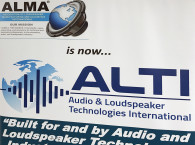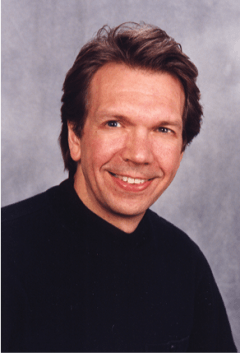
company his father founded in 1984.
Shannon Becker: Your father Cliff Digre founded MISCO. Tell us a little about him and why he started the company.
Dan Digre: My father founded what is known today as MISCO, a manufacturer of loudspeakers, audio systems, and related products serving dozens of markets and related industries. He was the kind of innovator who could make the most out of every situation, turning problems into business opportunities.
For example, in 1947, my mother bought a small radio with “horribly distorted” sound. When the problem turned out to be a bad speaker with a rubbing voice coil, my father—then a student at the National Radio School in Minneapolis—took it to a reconer in St. Paul to get it fixed. When the reconer lost the speaker and made excuses, my father went into business as Minneapolis Speaker Reconing.
My dad actively pursued the reconing markets, including the then-thriving drive-in theater speakers. His decision made Minneapolis Speaker Reconing the largest reconing service in the country.
In 1956, a customer asked my father to design and manufacture an 8” speaker with the same high quality as his reconed speakers. The initial production run of just 200 speakers was a huge success. However, just as the company began to assemble the second order for 1,000 speakers, the customer died and his company canceled the order.

a company that manufacturers
loudspeakers, audio systems,
and related products.
My dad had 1,000 speakers so he sold the speakers to whoever would take them. Then, repeat orders began pouring in as buyers discovered the speakers’ high quality. The line expanded to automotive speakers and 12” speakers for hi-fi sets. Cliff’s reconing company grew to become MISCO.
Although my dad was confident in his products, he wanted MISCO speakers to attract more attention in the marketplace and decided MISCO speakers also had to stand out visually. After considerable development, MISCO worked with Hawley products and began rolling out speakers with red molded cones, which came to be known as the legendary “Red Line.”
My dad’s career in the audio industry was book-ended by his service as a World War II combat veteran—first as a B-17 ball-turret gunner and radio operator based in England and 64 years later, as author of his memoir Into Life’s School.
Shannon: When did you take over the company and what products does it provide?
Dan: I took over the overall responsibilities at MISCO in 1990. Now I manage the company out of a new manufacturing facility in Minneapolis, MN. MISCO manufacturers more than 1,800 models of speakers and audio equipment for hundreds of customers in markets including pro sound, gaming, home theater, aerospace, medical, military, and transportation, as well as many other industries. My dad’s speakers have touched the ears of millions of people worldwide.
Shannon: When and how did you become involved in the family business?
Dan: I started cleaning drive-in theater speakers when I was in grade school. I used to take my speakers to school for “science day” and explain to my classmates how speakers worked. I even made a cut away that I could operate and show coil and cone movement. Through high school and college, I worked at every position on the assembly line so I was not only familiar with, but proficient, at every operation. Even so, my vocational choice was not to build speakers but to become a vocal music teacher and choir director and that’s what I went to college to study. I spent four years as a high school choir director, which I really enjoyed. I still sing in choirs, but I decided to return to the family business and help my father.
The markets were changing, and I knew reconing and small-time manufacturing was not MISCO’s future. We turned to OEM manufacturing and went from producing 1,000 speakers per week to 3,000 speakers per day. In addition to my responsibilities as president of MISCO, I have also been a past President of the Association for Loudspeaker Manufacturing & Acoustics (ALMA) International.
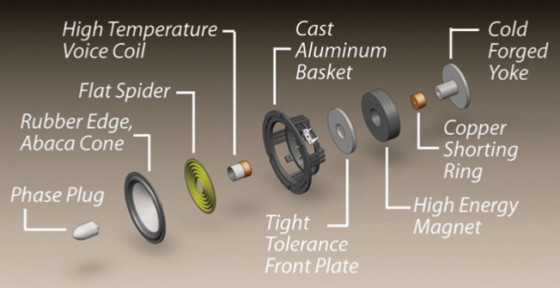
Shannon: What sparked your initial affinity for audio technology?
Dan: I have always had a love for music and a fascination with sound. I suppose if you grow up with the technology around you it sparks your interest further. I have always been intrigued by the power of a loudspeaker—to produce stunning music, its simplicity of operation, and the complexity of interaction between the parts of the speaker and the acoustical environment. We do a lot less by trial and error today, but there is still a fair amount of “black art” in the design of cones and controlling the break-up modes out of the piston band.
Shannon: Tell us about MISCO’s first product. How did it come about and is it still sold today?
Dan: Aside from a variety of 4” and 5” drive-in speakers, MISCO developed an 8” full range speaker in 1956 for hi-fi. It had an Alnico magnet, a feathered-edge paper cone, and high sensitivity. It was featured in a kit in Popular Science magazine in the 1960s. Many of MISCO’s customers have been buying the same speakers for more than 50 years and rely on MISCO to maintain exactly the same design for them because their product design depends on it.
Shannon: MISCO has introduced major technological and design innovations in the loudspeaker industry. Can you discuss some?
Dan: As a custom designer and manufacturer of speakers for other companies, our approach has been to provide our customers with the best solutions available for their product. That’s how we came up with our tag line “For the Sound You Want.” Each one of our customers has a different view of what that sound is depending on their product and market—intelligibility, high power, smooth frequency response, durability in tough environments—whatever it is, it takes a different sense of the design and the materials needed to create that design.
In the early days of transitioning from alnico magnets to ceramic magnets, there were several challenges to be overcome. Not the least of it was how easily ceramic magnets would flake off and create “chips” in the magnetic air gap. My father was awarded two fundamental patents that addressed these problems and provided a method for attaching magnet assemblies to baskets that provided enormous flexibility in manufacturing.
MISCO was one of the first companies to utilize high-energy neodymium magnets in non-automotive applications. Also, MISCO worked with Nuway Speaker products (now Loudspeaker Components) and Dupont to pioneer the use of Kapton as a high-temperature cone material for military applications. With customers in the alarm industries where durability and reliability are so critical, MISCO has also worked with voice coil and tinsel suppliers to develop long-life tinsel that can endure high power and high stresses for many years in the field.
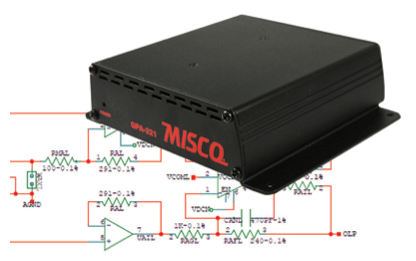
Shannon: How has the company changed to keep up with technology over the years?
Dan: Focusing on custom work has differentiated the company from its largely international competition base. Loudspeakers can be churned out by the millions by high-volume commodity producers, so we have to look at where we can apply our extensive knowledge and use of technology toward solving audio problems for other companies. The use of technology needs to support the overall goals of our company and our customers.
To keep our competitive edge, MISCO has turned to technology to support three key elements. First, we make no sacrifices on quality. Many competitors will use the “good enough” philosophy. At MISCO it’s “what did the customer approve and does this speaker meet the agreed upon specifications or not.” If not, it doesn’t ship. To that end, we have utilized sophisticated automated end of line testing equipment to assure ourselves and our customers that what we ship meets specs. We understand that you can’t inspect quality into a product, you have to build it in. That means working closely with our suppliers wherever they are in the world to assure raw materials are world-class quality and exactly meet our specifications.
Second, to be cost competitive we have established an extensive chain of suppliers and manufacturing capacity in the US and Asia. Our suppliers are best in class and we utilize and share our technology with them to keep them that way.
Third, we have invested in our people in Minnesota to ensure they have latest technology tools, training and motivation to the best loudspeaker designers, assemblers, technicians, customer service people anywhere.
In the past few years, we have been supplying complete audio system solutions—speakers, enclosures, wiring, and high-end Class-D amplifiers with DSP. Being able to control the quality of the entire audio system as allowed us to give our customers high end, update to date technology that works as a system.
As far as pure loudspeaker technology goes, our soon to be released high-end audio product line will employ many new technological designs and benefits that speaker engineers and designers have requested. And the products will be made in the US.
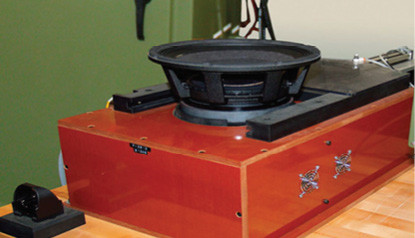
neodymium or ferrite magnet structures.
SHANNON: Why did MISCO build a new facility in 2001?
Dan: Our focus through the 1980s and 1990s was on small industrial-type speakers for which MISCO became famous. As we saw the need for larger sizes (up to 21”) and complete audio system solutions, this required more space for production as well as for the manufacturing equipment and more climate-controlled manufacturing. Our new factory is comfortable to work in and produces some incredible audio products.
The new facility has allowed us to layout our factory to maximize efficiencies in building speakers—the flow of materials, incorporating a Kanban system for material management, and flexible cell manufacturing to name a few.
One of the key features of building any pro-audio product is high-power/high-reliability testing. Pumping 1,000 W of audio signal through a professional loudspeaker during a power test will generate a dangerous amount of noise. That’s why our power tests are conducted in a new power testing “bunker” that protects the outside workspace from loud noise and speakers that could catch fire.
Another tool used in the new MISCO facility is the massive 3.4-kilojoule magnetizer. This is used for large neodymium or ferrite magnet structures—any structure that can or will be used in a loudspeaker can be charged in this magnetizer.
We also installed new end of line test equipment. Every finished loudspeaker ends the production process with a comprehensive performance test. We use Listen’s SoundCheck system to test each speaker against pass/fail limits (determined during the design phase), store the test data, and provide SPC data that can stored along with the speaker’s serial number if needed. Each test can takes about 5 s. Data from the entire production run can be analyzed for production trends, average values, pass/fail yields, and so on.

Shannon: What are the pros and cons of manufacturing in the US?
Dan: For US customers who are focused on high quality, require batch-to-batch, year-to-year consistency, and understand the difference between price and total cost of ownership, the benefits of US manufacturing far outweigh the challenges.
The benefits are three-fold: Communication—quick and direct communication means lower costs, less room for misunderstanding, and delivery of the expected product specifications; Quality—we don’t “push” the specifications (which goes hand-in-glove with communications); and Cost—the savings from transportation, customs, potential change-outs, or worse, poor quality. The cost of poor quality in terms of sorting, lot inspection, reworking, field replacements, and damaged reputation is enormous. So many of our customers today have come back to US manufacturing because of all these issues.
For the American manufacturer to compete, they need to communicate the true benefits of “Made in America” and make certain that they deliver on those promises. MISCO has also applied this same commitment to the products we manufacture in China. This has allowed us to be close to customers who need product delivered in Asia. The difference is that any MISCO product manufactured in China is the same as the product that is manufactured in the US and uses the same parts suppliers.
Shannon: MISCO recently celebrated its 65th anniversary. To what do you attribute the company’s success?
Dan: It sounds cliché, but it’s true: Success is achieved by meeting and exceeding your customer’s expectations for quality, service, and value. It’s about spotting market opportunities and changes and moving to fill those needs as quickly as possible. It’s about developing trust throughout the entire supply chain from the raw material supplier all the way through to our customer’s customer. Everyone does what they say they’ll do and if there is a problem, they are focused on fixing the problem not ignoring it.

custom software assures reliability.
The inset photo shows speakers
during the testing process.
Shannon: Are you currently working on or planning any new audio innovations?
Dan: As a custom manufacturer MISCO is always innovating. Customers come to us with new challenges and that requires new solutions. We work hand in hand with them to find the best solution typically involving smaller space, louder or deeper bass, and reducing the cost of ownership. Our customers rely on us to use the latest technology in amplification, magnetics, cone materials, voice coil materials, modeling software, and testing technology to help their product be innovative and competitive.
Shannon: Where do you see the audio industry in the next five years?
Dan: There will be a continuation of the need to achieve more performance from smaller products. The days of having a lot of space available for big speakers are over. Everyone is concerned with size and often weight whether in home, pro, commercial, or industrial markets. That requires more performance from smaller speakers, which means stronger motors and more sophisticated cone design.
There is much interest and a lot of research on the impact that nanotechnology could have on speakers. Can we “print” speakers? Can we “grow” speakers? Will we even need separate motors and cones or can they become the same part?
While the immutable laws of physics have to be respected, there will be new and alternative ways to get there. And wherever “there” is in the future, I can assure you, MISCO will also be “there.”



